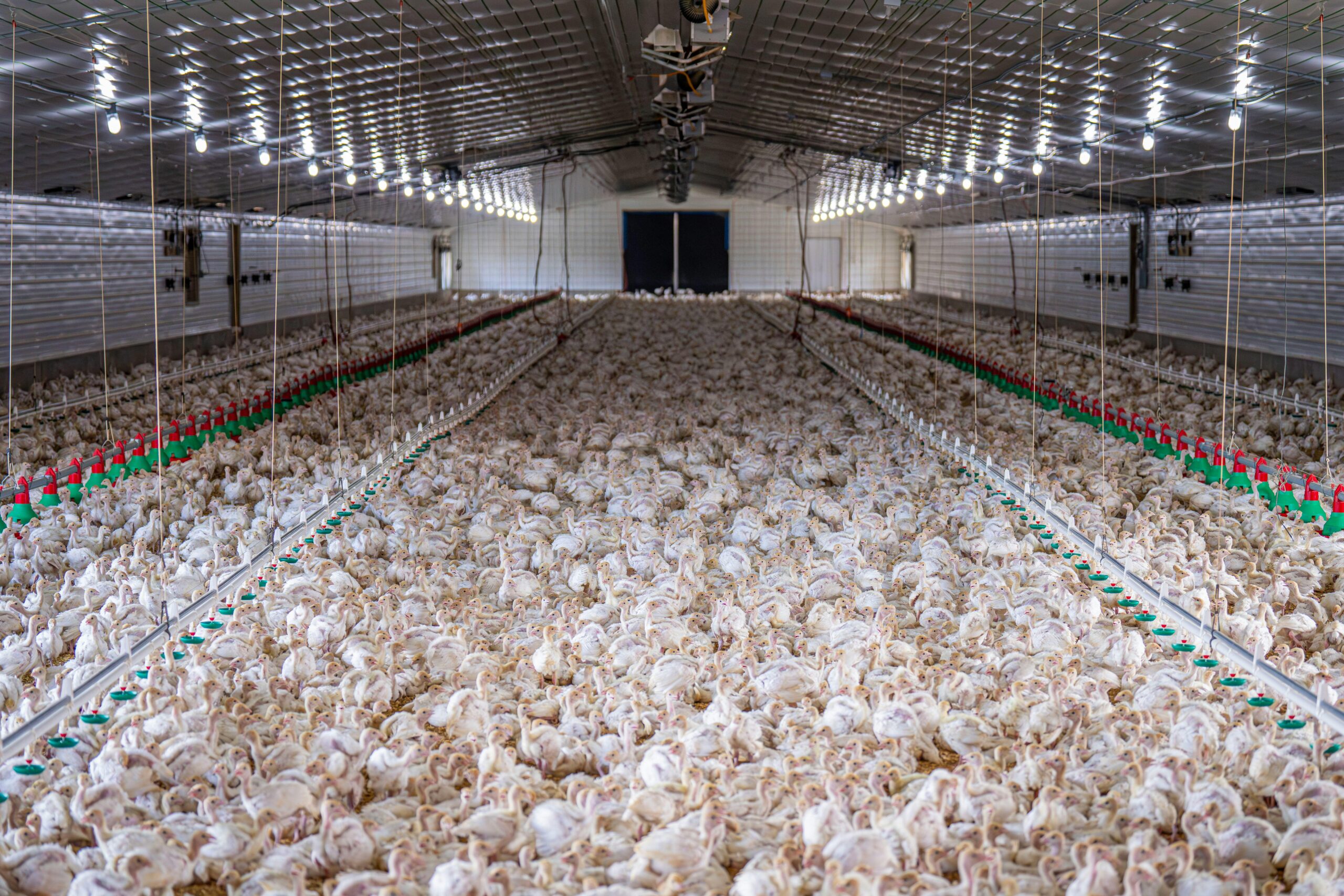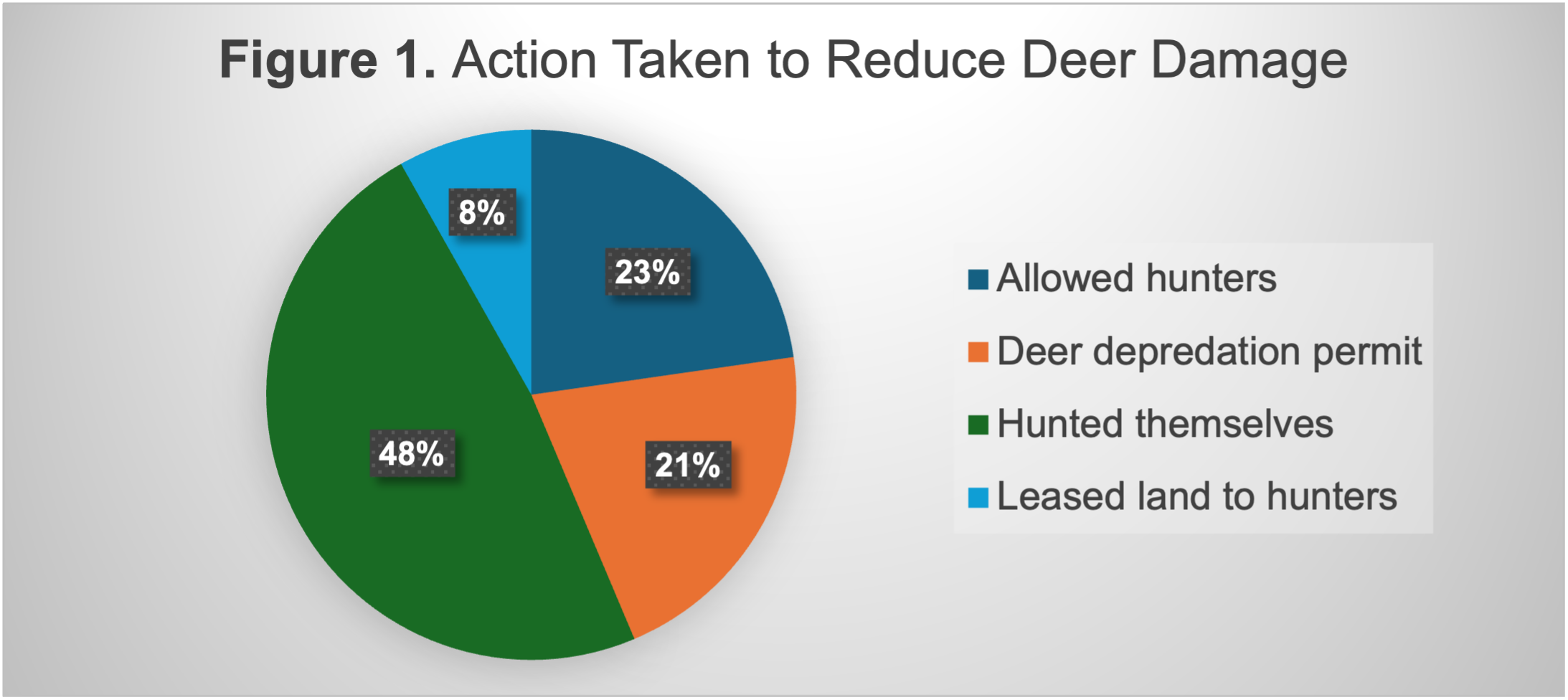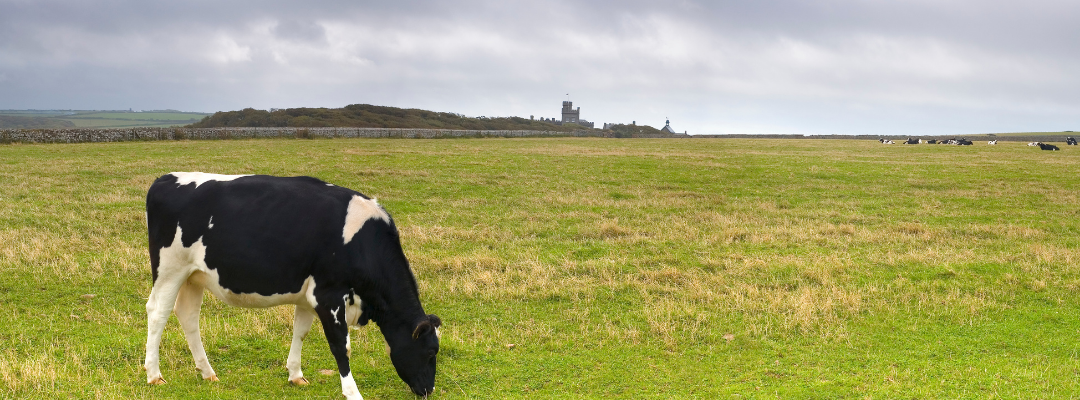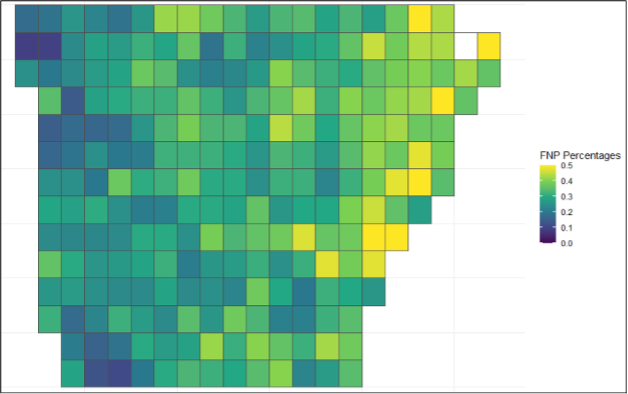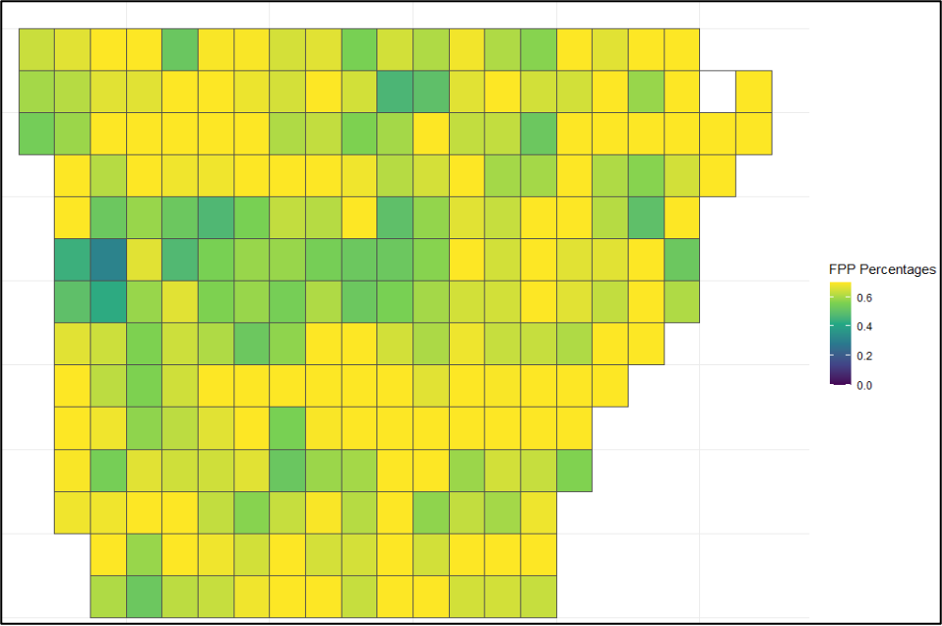The US poultry industry generates roughly 13.9 million tons of broiler litter (BL) annually. Broiler litter is a mixture of chicken feces, urine, bedding material (such as pine shavings, peanut hulls, or sawdust), spilled feed, and feathers. Most BL is applied on agricultural lands such as pastures and row crops as a soil amendment to improve the soil organic matter.
Broiler litter typically contains 11 essential plant nutrients – nitrogen (N), phosphate (P2O5), potash (K2O), calcium (Ca), magnesium (Mg), sulfur (S), copper (Cu), zinc (Zn), iron (Fe), manganese (Mn), and boron (B). It is a valuable organic fertilizer for sustaining soil fertility and supporting plant growth. However, nutrient concentrations in BL are highly variable and depend on several factors such as bird age, type of ration fed, number of flocks between cleanouts, age of litter, amount and type of bedding materials, compositing method, litter pH, and moisture content. The nutrient content of litter may also vary from one poultry operation to another. A survey analyzing the nutrient content of BL samples collected from poultry houses across Alabama revealed significant variability in nutrient composition. This is consistent with the BL analysis from Kentucky in a previous Southern Ag Today article (here). Table 1 provides the range of nutrient concentrations in BL collected from seven different poultry farms supported by three different integrators (Pilgrim’s Pride, Tyson, and Ingram). The analysis revealed that N content in litter can be as high as 66 lb/ton and as low as 34 lb/ton, with a median value of 58 lb/ton. Similarly, the P2O5 content was found to vary between lows of 38 to highs of 59, with a median value of 42 lb/ton. K2O was found to vary between 46 to 73 lb/ton with a median value of 52 lb/ton. Interestingly, the total carbon content of BL ranged from 260 to 609 lb/ton. Each ton of BL applied contributes a median of 528 lb of carbon to the soil. While the median values suggest a typical nutrient composition of broiler litter as 60-40-50, relying solely on these estimates can be costly for row crop growers purchasing litter as a substitute for commercial fertilizer—especially during periods of high fertilizer prices. To ensure accurate nutrient value and cost-effectiveness, it is strongly recommended that growers collect a representative sample of the litter and have it analyzed by a certified laboratory specializing in manure testing. This ensures they are getting the nutrient value they are paying for.
Growers using BL as fertilizer should be aware of the potential environmental risks associated with its application. For instance, applying litter annually for more than five consecutive years can lead to phosphorus accumulation in the soil, which may negatively impact water quality. Growers should watch for extreme phosphorus buildup by routinely testing their soils. Additionally, applying litter to fallow fields during the winter months should be avoided, as rainfall can cause nutrients to dissolve and either wash away or leach into the soil, reducing effectiveness, increasing environmental risk, and lowering the economic value of BL. The ideal time to apply litter is 10 days before spring green-up in the case of pasture and 10 days before planting a row crop. The nutrients in litter are available as both fast-release and slow-release. The fast-release components provide nutrients within a matter of 10 days, whereas the slow-release nutrients become available over months or even years. Most farmers should take advantage of the fast-release nutrients by synchronizing the litter application timing close to the timing of spring green-up.
Determining the value of BL compared to commercial fertilizer isn’t always easy. If you have values of N, P2O5, and K2O, the calculation is straightforward. However, the availability of fertilizer materials may include products such as DAP (18-46-0). In this case, use the value of N from a material that is N only (Urea) and subtract that value from the price of DAP. The remaining value is the price of P2O5 in DAP. Recent fertilizer prices in Alabama averaged $655/ton for Urea, $884/ton for DAP, and $509 for Potash (0-0-60). These prices give us a per unit value of N $0.71, P2O5 $0.68 and K2O $0.42. Using the median value of nutrient values in Table 1, the value of a ton of BL is $91.58. (N $41.18, P $28.56, K $21.84). If BL can be purchased, delivered, and spread for less than $91.58 per ton, it should be considered as a possible substitute for commercial fertilizer. Consider the micronutrients and carbon as a bonus towards soil fertility.
Table 1. Range of nutrient concentrations in broiler litter
| As sampled or wet basis (lb/ton) | ||||||||||||||
| Sample # | moisture content (%) | N | P2O5 | K2O | C | Ca | Mg | Al | B | Cu | Fe | Mn | S | Zn |
| 1 | 29 | 34 | 39 | 46 | 260 | 42 | 10 | 5.0 | 0.1 | 1.1 | 6.4 | 0.7 | 52.3 | 0.7 |
| 2 | 18 | 53 | 59 | 73 | 527 | 46 | 12 | 0.3 | 0.1 | 1.4 | 0.3 | 0.9 | 12.2 | 0.9 |
| 3 | 20 | 66 | 40 | 52 | 609 | 23 | 8 | 0.2 | 0.3 | 0.3 | 0.2 | 0.8 | 9.3 | 0.6 |
| 4 | 18 | 58 | 42 | 60 | 540 | 40 | 10 | 0.3 | 0.1 | 0.3 | 0.2 | 1.0 | 23.4 | 0.8 |
| 5 | 20 | 65 | 38 | 54 | 528 | 46 | 10 | 0.4 | 0.1 | 0.3 | 0.2 | 0.9 | 24.4 | 0.8 |
| 6 | 27 | 54 | 47 | 48 | 521 | 34 | 9 | 0.4 | 1.4 | 0.5 | 0.4 | 1.0 | 12.9 | 0.7 |
| 7 | 25 | 60 | 43 | 50 | 570 | 27 | 8 | 0.2 | 0.3 | 0.4 | 0.1 | 0.8 | 9.3 | 0.6 |
| Mean | 23 | 56 | 44 | 55 | 508 | 37 | 9 | 1 | 0.3 | 1 | 1 | 1 | 21 | 1 |
| Minimum | 18 | 34 | 38 | 46 | 260 | 23 | 8 | 0 | 0.1 | 0.3 | 0.1 | 1 | 9 | 1 |
| Maximum | 29 | 66 | 59 | 73 | 609 | 46 | 12 | 5 | 1 | 1 | 6 | 1 | 52 | 1 |
| Median | 20 | 58 | 42 | 52 | 528 | 40 | 10 | 0.33 | 0.10 | 0.38 | 0.25 | 0.89 | 12.92 | 0.74 |
Prasad, Rishi, Kent Standford, and Max Runge. “Broiler Litter as a Nutrient Source for Crop Production.” Southern Ag Today 5(24.1). June 9, 2025. Permalink
